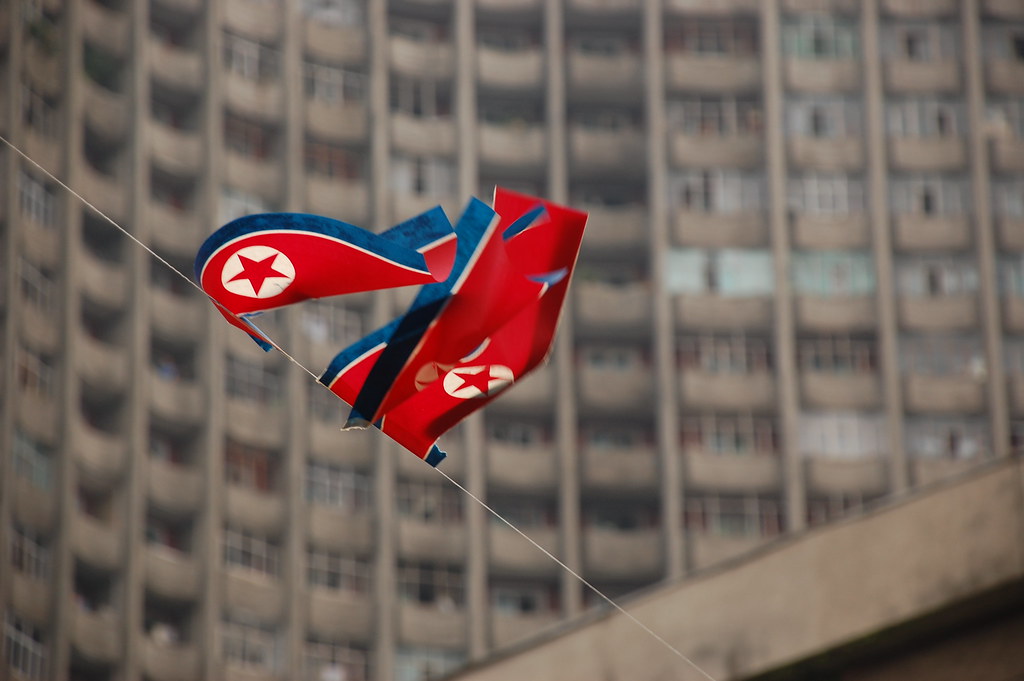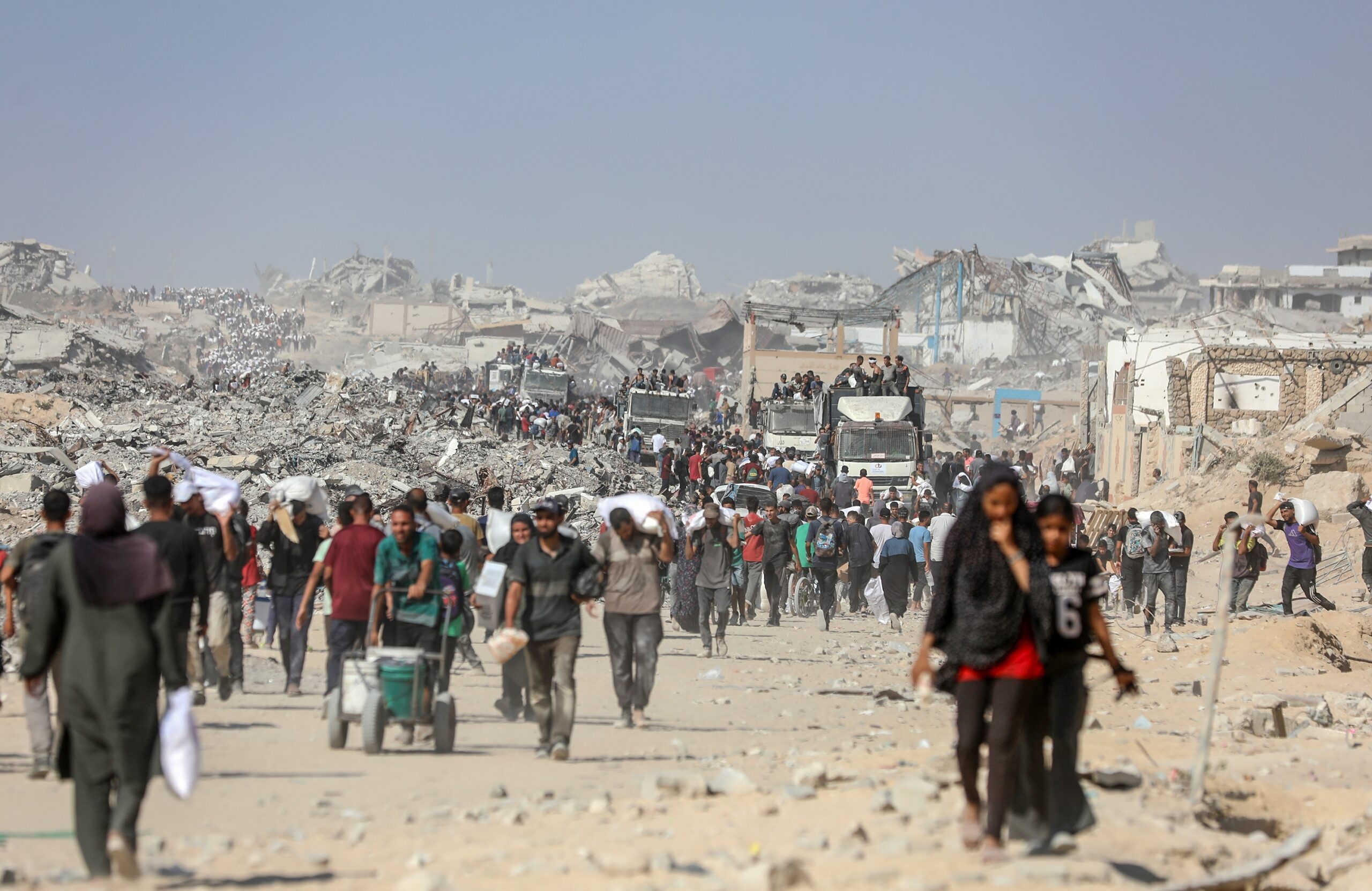For 70 years the North Korean Kim family have ruled with brutal oppression, but gained largesse from major powers and built a formidable nuclear arsenal. Cycles of engagement with the Kims from the outside world, including Australia, South Korea, the US and China, have failed to influence or halt the current leader Kim Jong-un’s nuclear program. What did we get so wrong about the Kim regime? Who now has the power to alter his course? Another Trump-Kim summit is unlikely to do so. China holds the key.
North Korea’s Evolving Threat
North Korea’s leader Kim Jong-un poses significant strategic challenges for Australia and the international community. Despite less media attention since the Trump-Kim summits of 2018-19, North Korea has advanced its missile and nuclear capabilities and is now brazenly showing them to the world.
Prior to the October 2025 APEC summit in Seoul, North Korea test-fired two hypersonic missiles, showcasing technology designed to evade regional missile defences and signalling its intent to strengthen its nuclear deterrent. There was immediate international condemnation and calls for dialogue. But outside of Northeast Asia, the focus on North Korea is sporadic.
Cycles of economic disaster and strategic escalation are nothing new in the Hermit Kingdom. Kim’s father and grandfather ruled in this way – and resisted external forces – for 70 years. Are these cycles able to be broken and Kim Jong-un convinced to give up nuclear weapons? Doing so would fundamentally alter the international strategic outlook and free up the political and military capital of the United States and its allies, including Australia.
South Korea Lives with Threat.
South Korea, which has detailed knowledge of the inner workings of the Kim regime, faces ongoing threats including tactical nuclear strike warnings and rapidly improving missile capabilities aimed at both it and Japan.
Yet, younger South Koreans, who did not experience war or deep engagement between the Koreas, are immune to the drama. Voters in the South focus on safeguarding their own democracy and prosperity amid global trade tensions. However, they do not dismiss the North’s provocations. Recent estimates suggest North Korea possesses 50 nuclear warheads and enough material for 70 to 90 more, plus advanced delivery systems.
Since 2002, North Korea apparently has been able to build a deterrent powerful enough to thwart attacks or attempts at regime change by outside powers including the United States and China.
Economic Realities
Kim Jong-un is the third generation of his family to rule North Korea with total control. Founded in 1948 by Kim Il-sung, North Korea initially had a larger economy than the South despite being half its population size, thanks to Soviet support.
Today, North Korea’s population is 26.5 million, with a quarter living at subsistence levels. Its trade with China includes luxury goods and technology flowing to Pyongyang’s elite – and amounting to just 2% of the value of South Korea’s annual trade with China. South Korea, now among the world’s top economies, enjoys far greater prosperity and equality for its 52 million people, than the North.
North Korea remains a dynastic dictatorship, using military and social coercion—including a draconian system of family sanctions and rewards—to maintain a criminal, nuclear-armed regime immune to outside influence.
Kim Il-sung’s ‘Juche’ self-reliance system, developed after the collapse of Soviet support, echoes South Korea’s earlier ‘bootcamp capitalism’ under dictators, notably General Park Chung-hee. However, South Korea transitioned to democracy and economic stability, earning the title ‘miracle on the Han River’.
Engagement and Missed Opportunities
Australia and other advanced economies benefit from strong trade and political ties with South Korea. Following President Kim Dae-jung’s ‘Sunshine Policy’ in 2000, a brief period of concerted international engagement with North Korea ramped up with hopes of encouraging Kim’s father toward economic reforms similar to those of China or Vietnam. Foreign officials visited Pyongyang, and aid flowed in, but much of this activity halted in 2002. Kim Jong-il admired not reform and opening, but the authoritarian capitalism of South Korea’s past.
Similarly, the US-led Six Party Talks continued for a few years but ultimately failed.
Misleading Narratives
Why did Australia, the United States, and others so badly misread North Korea during that decade? Limited reliable intelligence led to externally constructed narratives, easily manipulated by Pyongyang. Foreign aid and trade failed to induce Kim while he pocketed proceeds and shored up arms programs.
Kim misled the world about his nuclear ambitions. The 1994 US-DPRK Agreed Framework aimed to provide energy via construction of proliferation-proof lightwater reactors, with Australia funding oil imports for North Korea as the reactors were being built.
Later, South Korea’s electricity company KEPCO began redesigning North Korea’s electrical system. But the program was halted due to Pyongyang’s paranoia when KEPCO engineers planned to traverse the country in preparation. In 2002, after it was discovered to be secretly pursuing a uranium enrichment program, North Korea openly declared its intention to develop nuclear weapons. The Six Party Talks dissolved by 2006-07, and North Korea ramped up its testing of long-range missiles and nuclear devices.
Within a decade, North Korea’s capabilities grew rapidly, even as its countryside was impoverished. Official visits dwindled, embassies closed, and tightly controlled Potemkin-style tourism became one of the few ways outsiders could visit the North.
Negotiation Cycles and Political Dilemmas
Negotiations with Pyongyang have circled the same issues for years. The Kim regime extracted benefits from Seoul and Washington during each engagement cycle. Beijing – which prefers the status quo – tolerated a nuclear-armed North Korea as a buffer to keep US troops from its border.
North Korea has now abandoned agreed historic language about ‘denuclearisation’ and ‘peaceful unification’] in favour of locking its nuclear policy into its constitution, with tacit acceptance by China and probable encouragement by Russia.
South Korean President Lee Jae-myung faces a dilemma: amending his country’s constitution – which specifies pursuit of peaceful unification – or halting engagement with Pyongyang. Amending the South Korean constitution would provoke a serious domestic political backlash for Lee.
Yet calls for North-South engagement, and for President Trump to attempt another summit with Kim Jong-un are rising, as Kim showcases his arsenal and courts other powers for energy and technology in breach of UN sanctions.
Putin’s Pact with Kim
Russian President Putin’s visit to Pyongyang in 2024 to sign a renewed mutual defence pact was a potential game-changer for Kim. North Korean troops were sent to fight in Russia’s Ukraine war, and Pyongyang received oil, gas, food, and possibly nuclear technology from Russia.
The benefits of this alliance positions Kim to resist outside influence, even from his other formal ally, China. Kim is estimated to have earned US$4-6 billion from supplying Russia with ammunition, artillery, missiles, and troops, plus US$1 billion annually for the past decade from arms sales, worker remittances, and cybercrime. Kim has accelerated a pattern of extortion, criminal activity and brutal oppression begun by his grandfather.
Who Can Change These Cycles?
This pattern is unlikely to be broken by another Trump-Kim summit. China, not the United States, is the only country capable of changing the status quo, but is not so inclined.
Premier Xi’s calculus depends on his perception of US ambitions – adherence to global nuclear controls, South Korea’s security, and assistance to Taiwan. The division of the Korean Peninsula in 1948 and Taiwan’s separation from mainland China in 1949 continue as key elements of Beijing’s strategic outlook today.
Only coordinated, long-term pressure and reward efforts from both China and the United States could sway Kim from nuclear escalation. Xi and Kim have the luxury of time and few if any incentives to change course on nuclear build-up.
Presidents Trump and Lee now have only a few years remaining in their elected terms to turn around entrenched patterns and hardened intentions. And history suggests that three years will not be long enough to complete a cycle of nuclear and economic negotiations with Kim Jong-un.
This is an edited extract from AIIA Episode “Three Kims: Narratives, Nukes, and Negotiations” featured by former career diplomat Jane Hardy.
Watch the video on YouTube to find out more.
Jane Hardy is a former senior Australian diplomat who has served in seven long-term overseas Australian missions, four at ambassador level. She also held numerous Senior Executive positions in DFAT, Canberra during a 33-year career. Jane is now a senior fellow at the US Studies Centre, Sydney University advising the Women in the Alliance program. She holds degrees from Monash University (MA), Flinders University (BA), University of South Australia (BA), and the Australian National University (Grad Dip).
This article is published under a Creative Commons License and may be republished with attribution.





